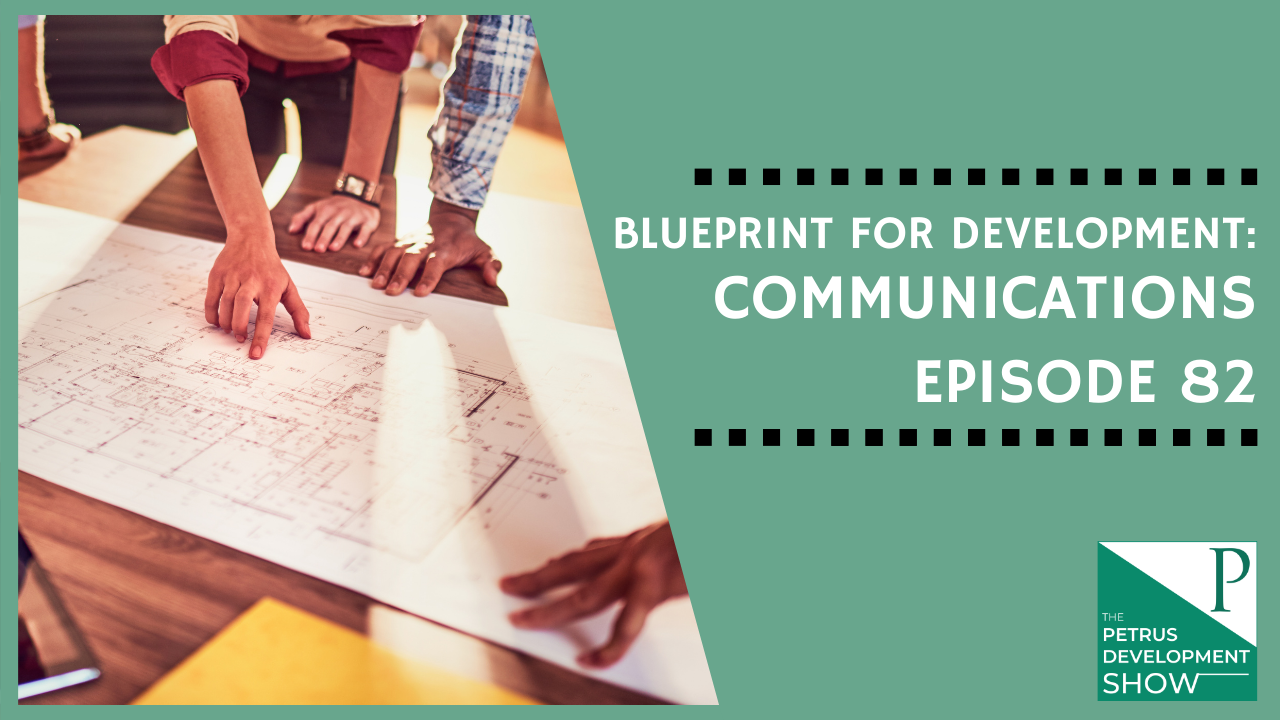Blueprint for Development: Communications on the Petrus Development Show

In this episode Tara Doyon, Director of Client Services and Sarah Rose, Director of Communications, continue leading us through the Blueprint of Development series. They discuss what your communication efforts look like today and what they can look like in the future once you implement a sustainable development program at your organization. You don't want to miss out on hearing the great first steps they give on how to begin transforming your messaging to be donor-centric so that you can continue building the Kingdom.
Show Notes:
What you've seen
What communication materials are being sent out currently? Let's take an audit of your communications efforts. A lot of times it's only the Sunday church bulletin and maybe a website.
Tara's organization did an in depth audit with an outside consultant close to a decade ago and, while the bulletin was number one, they were able to dissect what it was about the bulletin that made it number one. What was it about this information piece that made it so valuable to their congregation?
Communication Strategies
1. What different types of median can we use? newsletters, website, bulletins, social media, email, appeal letters, visuals
2. What are we communicating? What is that message?
Different audiences need different communication pieces but you can still streamline and consolidate.
The details are important, but don't get lost in the details and lose your message or audience.
Logistical First Step
Know your audience.
Templates
In the software you use, you are typically provided with free templates or can easily create your own templates. You don't have to recreate the wheel every time.
Canva Pro - free for all non-profits, you simply need to apply
Use shared drives for visuals that you can use for your communications efforts
Builds confidence in your community that you are professional, legitimate and know what you're doing.
Messaging
It's easy to come up with mediums and pictures to use, but it can be very difficult to start crafting your message.
"We need a new roof, donate today." "We need cookies for this event." This is not donor centric language.
Donor centric language is language that is inclusive of donors and that paints a picture that the donor is involved in. "You feed our students." "Your donation brings students to the center." "We can do this together." "Together, we can build the church."
Take the focus off the institutional pride and put it on the community and the donor. You have to allow the donor to see themselves as an action player in the ministry.
You also need to be including a call to action in your messaging. Make sure that it's clear what the next step is to get involved/donate.
If it's a donation, how to we do that. Do we mail in a check or go to a website or etc.
Recap
What would your steps look like if you had a sustainable development program:
- Three appeals a year at predictable times
- Three newsletters a year at predictable times
- Coordinated social media campaigns
- Change in your messaging to be donor centric
- Have regular events where you have the chance to see donors without making a monetary ask
First Steps to begin changing your communication strategy:
- Make a list of all the communications pieces you currently have and all the audiences that you think you should have - this will give a clear picture of what's missing
- Circle every time you use You, Me, We, They, Them and it will help you see if your messaging is donor centric or not.
If you have questions for Petrus, email us at [email protected]. We’d love to chat.
And as always, we hope you have a great day today, God bless you and God bless your work.
READY TO BECOME A BETTER FUNDRAISER?
Sign up below to receive tools, ideas, and inspiration to take your development efforts to the next level.
We hate SPAM. We will never sell your information, for any reason.


